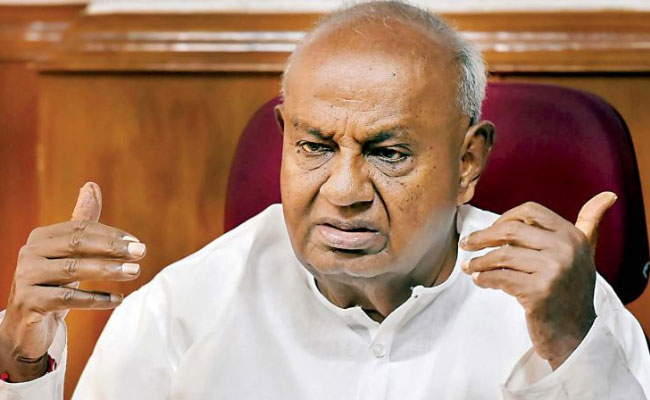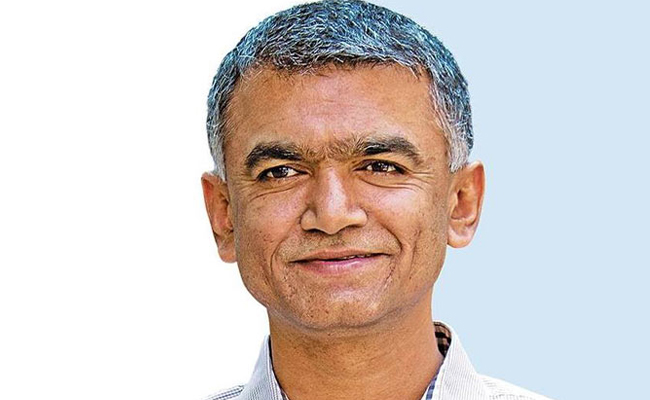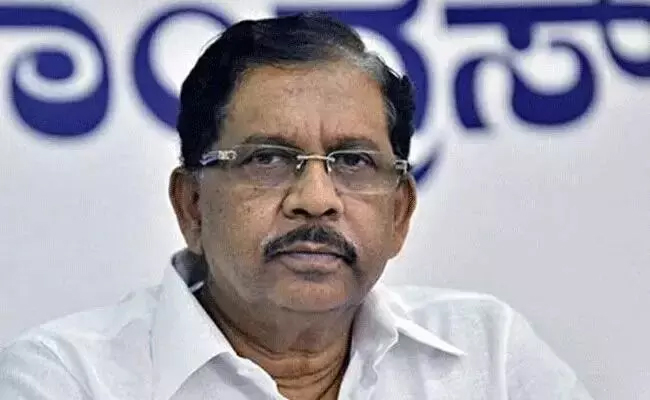Bengaluru: Amid the buzz around forging opposition unity ahead of the Lok Sabha elections, Janata Dal (Secular) patriarch and former Prime Minister H D Deve Gowda said on Sunday that the Congress should set its house in order first.
In an interview to PTI, he also said there are many options before opposition parties and this nation has a wealth of leadership.
Upbeat about JD(S)' prospects in the May 10 Assembly polls in Karnataka, the veteran leader who has withdrawn from active campaigning due to age- related ailments said it will set the tone for other state elections this year and the the 2024 Lok Sabha polls.
Amid a tough electoral battle involving the two national parties--ruling BJP and the Congress, Gowda expressed confidence of his JD(S) coming to power and said it was seeking votes in the name of "an inclusive social and development vision, the Pancharatna programme."
That the party was 'limited' to Old Mysuru region is a "clever propaganda of the national parties," the party patriarch averred.
National parties come up with "tall and false claims", he said in his written replies to PTI's queries.
Q&A
Q: How do you see JD(S)' prospects in the upcoming Karnataka Assembly elections? What is going to be the JD(S) strategy and focus of the campaign?
A: My party will do well across Karnataka. A lot of people who are cynical and focusing only on the two national parties will be surprised. We are not seeking votes for a divisive agenda. We are seeking votes in the name of an inclusive social and development vision the Pancharatna programme. My party will come to power and we will implement the programme.
Our leader H D Kumaraswamy has just completed a statewide tour to publicise this programme. The response he has received is overwhelming. Our party strategy is very simple work hard and be sincere with people, don't keep bluffing to them and don't divide them.
Q: There is a perception in some quarters that JD(S) has not been able to expand its base considerably beyond old Mysuru, what is being done on that front?
A: That we are limited to the region is a clever propaganda of the national parties. We have always had MLAs from across the state and from across communities. Somebody has to go through the list of MLAs and constituencies since 1999 to understand what I am saying.
Yes, the Mysore region has offered us maximum support and we are grateful for that. This time we will be far more successful in all regions of the state. As a minister, chief minister and prime minister I have worked for everybody, I have never discriminated between regions. Vested interests spread lies. In my career I never hired expensive PR agencies to counter the lies. God and the people who have nurtured me for over 60 years know the truth.
Q. JD(S) has set a target of 123 seats to form an independent government. Some critics say it is unrealistic. What gives you confidence that it is achievable?
A:Our hard work and development vision gives us the confidence. I don't care about the cynicism of our critics and political opponents.
Q: What is your take on national parties BJP and Congress, and have they delivered when in power in Karnataka.
A: I don't want to comment on this. Our leaders H D Kumaraswamy and C M Ibrahim (JDS state president) can offer a proper analysis on this. I can only say that the national parties are in the habit of making tall claims and false claims. People have seen through their circus and falsehoods.
Q: How important is Karnataka elections and what is going to be the implication of its outcome on the national political scene?
A:Karnataka will set the tone for other state elections this year and the parliament elections in 2024. It has always done so and will do this time too.
Q: Your take on Prime Minister Narendra Modi and his performance, as he completes 9 years in office soon, and the ongoing debate regarding democracy in India under his rule?
A:I participated in Rajya Sabha on all issues, be it agricultural issues, farm laws, Covid, union budgets, the economy, the North East, Kashmir etc., I have spoken in detail. It is on record in Parliament and on my social media account. If somebody cares to look at them they will know what my assessment is of the BJP government at the Centre. I have always taken my job seriously and continue to do so at 91. Congress party is not the only opposition party in this country.
Q: What do you think the role that the Congress needs to play in forging opposition unity with an eye on 2024 Lok Sabha polls?
A:First the Congress should set its house in order. There are many options before opposition parties and this nation has a wealth of leadership.
Q: What is your view on disqualification of Rahul Gandhi as MP, after being convicted in a defamation case?
A: I don't want to comment separately. My party's senior leaders have spoken on it already. All I can say is it is very unfortunate.
Q: Do you still feel there is a possibility for revival of Janata Parivar and the Third Front, or is it a closed chapter?
A: Everything is possible. By everything I mean everything. I don't believe in third or fourth front, I believe whatever we do, we'll be the first front to defend this nation and democracy.
Let the Truth be known. If you read VB and like VB, please be a VB Supporter and Help us deliver the Truth to one and all.
Bajpe: Police have arrested a youth for allegedly posting derogatory and defamatory content against the Bajpe police on social media.
The arrested accused has been identified as Abhishek M. (23), a resident of Katipalla, Surathkal.
According to the police, Abhishek posted a photograph of Bajpe Nisarga Hotel on his Instagram account mr_a_titude_22, alleging that accused persons in a murder case under the jurisdiction of the Bajpe police station were being treated “like royalty” by the police and were being served beef meals from the hotel every day. In his post, he further accused the police of colluding with criminals and misusing their authority, stating that public trust in the police was being betrayed.
Following which, the Bajpe police registered a case and arrested the accused.
Police records reveal that Abhishek is already facing multiple criminal cases. A case of murder, attempt to murder, assault and robbery has been registered against him at the Surathkal police station. At the same time, a robbery case has also been registered at the Kaup police station.
After his arrest, Abhishek was handed over to the custody of the CEN police for further investigation. He was later produced before a court, police said.





